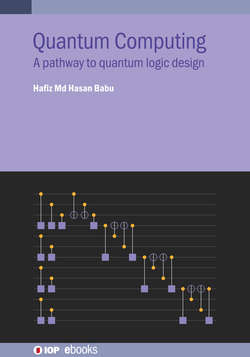Читать книгу Quantum Computing - Hafiz Md. Hasan Babu - Страница 14
На сайте Литреса книга снята с продажи.
1.4 Quantum computers
ОглавлениеIn 1959, Richard Feynman noted that ‘as electronic components begin to reach microscopic scales, effects projected by quantum mechanics occur’. He advised that it might be used in the design of more powerful computers. In particular, quantum researchers hope to bind the superposition. In the quantum mechanical world, objects do not necessarily have visibly defined states. A traditional digital computer works with binary digits that can be in one of two states, denoted as 0 and 1; thus, for example, a four-bit computer register can hold any one of 16 (24) possible numbers. However, a quantum bit (qubit) exists in a wavelike superposition of values from 0 to 1; thus, for example, a four-qubit computer register can hold 16 different numbers concurrently. In theory, a quantum computer can therefore control many values in parallel, so that a 30-qubit quantum computer would be equivalent to a digital computer proficient at performing 10 trillion floating-point operations per second.
During the 1980s and 1990s, the theory of quantum computers advanced considerably beyond Feynman’s early assumptions. In 1985, David Deutsch designated the structure of quantum logic gates for a universal quantum computer. In 1994, Peter Shor established an algorithm to factor numbers with a quantum computer that would involve six qubits (although more qubits would be essential for factoring large numbers in a rational time).
In 1998, Isaac Chuang, Neil Gershenfeld, and Mark Kubinec produced the first quantum computer (two-qubit) that could be burdened with data and output a result. Although their system was rational for only a few nanoseconds and slight from the perspective of solving meaningful problems, it verified the principles of quantum computation. This type of quantum computer can be prolonged by using molecules with more individually addressable elements. In March 2000, Emanuel Knill, Raymond Laflamme, and Rudy Martinez reported that they had generated a seven-qubit quantum computer. However, many researchers are skeptical about extending magnetic techniques much beyond 10 to 15 qubits because of diminishing consistency among the elements.
Quantum computers established on semiconductor technology are yet another opportunity. In a collective approach, a discrete number of free electrons (qubits) reside within incredibly small sections known as quantum dots. Although relying on decoherence, such quantum computers are constructed on well-established, solid-state procedures and offer the prospect of readily applying integrated circuit ‘scaling’ technology. In addition, large groups of identical quantum dots could theoretically be contrived on a single silicon chip. The chip controls an external magnetic field that controls the electron spin states, while neighboring electrons are weakly coupled through quantum mechanical effects. An array of covered wire electrodes allows individual quantum dots, which have been discussed.
